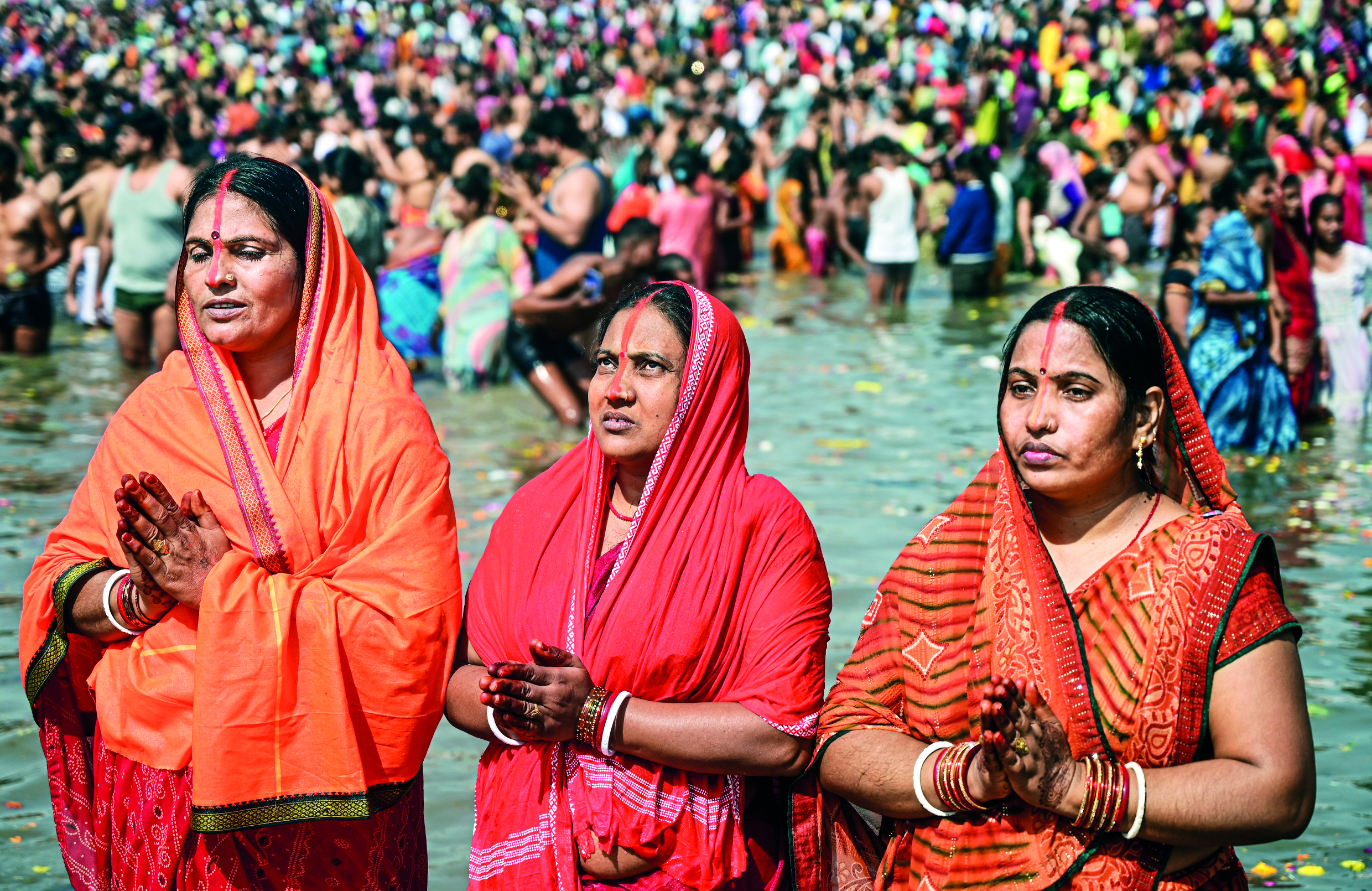Faith in the sacred waters
The Divine Kumbh by Deepak Kumar Sen explores Kumbh Mela’s ancient mythology, vibrant rituals, and spiritual significance, offering a vivid journey through heritage, devotion, and modern transformations of this global religious phenomenon. Excerpts:

Shahi Snan or ‘royal bathing’ by the saints associated with various akharas on specific days is a major event of the Kumbh Mela. On these days, sadhus associated with 14 akharas participate in the ritual bath. Of these, 13 are registered akharas or a monasteries for religious renunciates. They take baths according to their turn, a system said to be devised by the Britishers, which is still in vogue. After the seers take a bath and perform their rituals, millions of men and women who come from around the world, are allowed to take the holy dip. Shahi Snan of the Kumbh Mela is a very important event and every Hindu pilgrim wants to be a part of this occasion. During this period, faith moves like mountains on the bank of the river, and makes one endure the hardships which come as an integral part of the fair.
There is an interesting fact behind the marriage of ‘Shahi’ which is inherently Persian terminology, with a pious ritual of the Hindu religion— ‘Snan’. The mingling of ‘Shahi’ with ‘Snan’ validates the cultural crossover and cross-pollination between languages which bred in medieval India, due to Arabic influences.
Sacred religious texts and myths of India testify that in the carnal soul lives an eternal hope that things will be better, without the ever-imminent fear of them getting worse which cripples us here.
The Maha Kumbh represents a congregation of millions who gather to be freed from the vicious earthly cycle of life and death, and move towards a heavenly realm, where suffering or pain does not exist. An eternal life free of sins is the promise that comes attached to the magnificent event of Kumbh.
Pouring out ghee into the fire with a wooden ladle, the sanyasi should chant the following mantras:
Om: May the wind in all parts of myself, such as pran (life), akuti (feeling), intestines, throat, navel, and all other limbs be purified: I am a stainless, sinless light; this ghee is poured into the fire for my good. I bow to the wind within myself.
Om: the absolute brahma (or cause) is universal (or perfect), the brahma with attributes (or active brahma), also is universal. From the universal comes the universe. When we have abstracted the fullness of the perfect (or universal), the perfect (or universal) brahma is indeed left behind in our hearts.
—Brihad-Aranyaka Upanishad
The question of precedence in bathing on these occasions, formerly led to bloody fights. But the British governments, after inquiring into time honoured practices, have laid down the following rules, which are strictly enforced by the Mela magistrate.
According to these rules, Naga gosains take a bath first, then the Vaishnav Bairagi sadhus, followed by the Udasin Nanak Panthi, and lastly the Nirmal sadhus.
The Kumbh Mela of 1882 is thus described by Mr T Benson, I.C.S., in his report:
To each corporation (Akhara) of religious ascetics was assigned a space of ground, within which it erected a temporary village or town for the accommodation of its members, in the centre of which moved the standards of the guild on a lofty flag staff. These encampments were orderly and well laid out, and of a comfortable description… The various camps formed were:
1. Nirvana Naga gosains
2. Niranjani, who was associated with the Juna
3. Bairagis, including three sects
4. Chhota Akhara Panchayati Udasin Nanak Panthis
5. Bara Akhara Panchayati with the Bandhua Akhara (Sikh)
6. Nirmal Sikh with Vrindavani
Here it is pertinent to mention that akharas are given special preference during Shahi Snan as these akharas played a pivotal role as the protectors of dharma while fighting against onslaught and invasion during the medieval period. Since Dharmayudha sacrifice and savageness are both manifested while slaying opponents, akhara sadhus, are given special treatment in Shahi Snan to wash away the sins that might have been committed by them during the elimination of the vidharmi.
The order in which the akharas take (Shahi Snan) is different for all four Kumbh Melas, and the main royal bath is separate for every Kumbh Mela. Shahi Snan is a ritual carried out with great faith and devotion by Hindu devotees. It is a symbolic ritual and has mythological significance.
The intergovernmental committee for the safeguarding of the intangible cultural heritage under UNESCO has included Kumbh Mela in the representative list of Intangible Cultural Heritage of Humanity at its 12th session held at Jeju, South Korea during 4–9 December, 2017.
The committee observed that ‘Kumbh Mela’ is the largest peaceful congregation of pilgrims on earth. The festival, held in Prayag, Haridwar, Ujjain and Nasik, is a synergetic set of rituals related to worship in India. It is a social ritual and festive event closely linked to the community’s perception of its own history and memory. The element is compatible with existing human rights instruments since people from the walks of life, without any discrimination, participate in the festival with equal fervor. As a religious festival, the tolerance and inclusiveness that Kumbh Mela demonstrates is especially valuable for contemporary world
(Excerpted with permission from Deepak Kumar Sen’s The Divine Kumbh; published by Niyogi Books)



